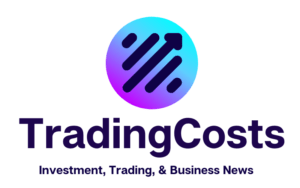While a viatical settlement can be painful to talk about, it’s a necessary part of many individuals’ lives. Under a viatical settlement, someone with a terminal illness or lowered life expectancy can sell their life insurance policy for a discounted premium of cash value. This is is also sometimes referred to as a death benefit.
Understanding how a viatical settlement works are critical for many. Your policy’s death benefit can help with medical expenses and getting money to beneficiaries more effectively. Here’s what you need to know.
How Viatical Settlements Work
Viatical settlements are sometimes thought of as riskier benefits. That’s because, for many, it’s difficult to accurately predict life expectancy, even for an ill person. On top of that, the lower the life expectancy, the lower the cash surrender value. But first, it’s important to understand the viatical settlement process. Your standard viatical settlement example is as follows: First, a life insurance policyholder chooses to sell their insurance policy. The life insurance policyholder commonly reaches out to a third-party broker, often called an aviator. The viatical settlement provider then works to acquire a cash value payout on the secondary market. Once the cash payment is secured, the insurance policy is relinquished to the buyer.
While a viatical settlement typically benefits an ill person, there are also instances where someone without a terminal or chronic illness would choose to sell their life insurance policy. In the United States, this can have tax implications with the IRS, so it’s frequently advised that you find a way to acquire your policy’s cash surrender value by other means. Sometimes, an accelerated death benefit is possible which has a cash surrender value that is less than the full payout but also can get money to a beneficiary before the policyholder dies. This can help you secure a viatical settlement payout without having to rely on a third party.
Choosing a Viatical Settlement Provider
In the viatical settlement industry, not every viatical settlement provider or broker is able to sell a life insurance policy to your maximum benefit. If you want a larger net death benefit that comes closest to the policy’s face value, it’s important to find an aviator that can help you acquire the largest payout possible. First, you’ll want to find a broker that holds a current license. This is important when selling a life insurance policy as you’ll need to comply with state law. Most life settlement companies are well-equipped on the legal basis of a viatical settlement so this is helpful. Typically, you’ll want to get viatical settlement quotes from several settlement providers and ensure their knowledge of insurance laws.
Even if a settlement provider offers a quote that’s close to the original face value or net amount, that’s not enough on its own to sign a viatical settlement contract. You’ll want to know how much commission your life settlement broker takes and how much is cut out for the purchaser as well. You’ll also want to make sure the life settlement broker puts the policy’s cash value or lump sum into a separate financial institution escrow account to protect the funds during the transfer. On top of this, you’ll want disclosure as to whether or not the sale of a life insurance policy can be reversed in the event of the seller’s remorse. Lastly, discuss surrender charges, collateral, interest rates, and navigating the viatical settlement with your life insurers.
A life settlement transaction can be complicated and requires substantial supervision. Especially for an ill patient or someone with severe cognitive impairment on health insurance, it may be tempting to accept the best offer and move on. However, it’s best to meet with several life settlement companies within the viatical industry to compare. A viatical settlement is a major choice. Make sure that you make it wisely.











